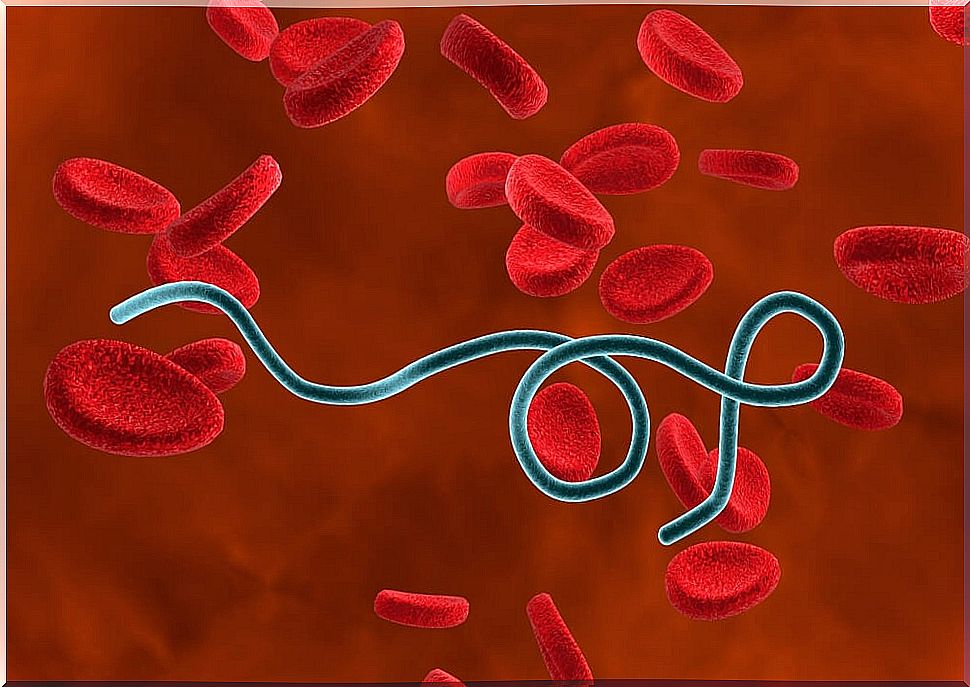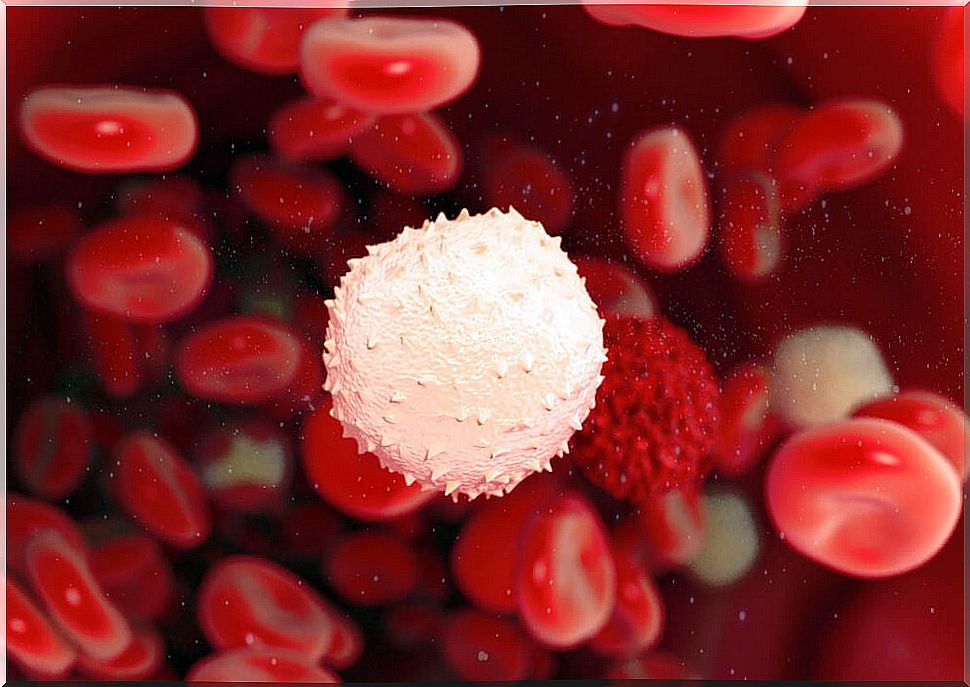Leukopenia: Causes And Consequences
The decrease in the number of leukocytes circulating in the bloodstream can be due to mild problems, such as treatment with certain drugs, or more serious problems, such as certain types of Cancer.

The bone marrow produces approximately 100,000,000,000 (one hundred billion) white blood cells, also known as leukocytes, each day. To detect its levels, a blood test is performed that measures the level of leukocytes per microliter. The normal value is between 4,000 and 11,000 leukocytes per microliter of blood. That the figure is less than 4000 can suggest certain problems, some of them serious.
White blood cells are part of the immune system. They float in the blood defending us from viruses and bacteria that try to invade the body.
White blood cell classes
There are several types of white blood cells, which are divided into two groups based on whether they present (neutrophils, eosinophils and basophils) or do not present (lymphocytes and monocytes) lobulated nuclei.
Below are the different types of leukocytes ordered from highest to lowest presence in the blood.
- Neutrophils. They protect the body from infections caused by bacteria and fungi. They represent more than 45% of the leukocytes found in the bloodstream.
- Lymphocytes They are 20% of white blood cells, and their decrease increases the risk of contracting infections considerably.
- Eosinophils, monocytes and basophils. They represent the smallest leukocyte population, however, their absence can also pose certain problems related to infections.
Diseases that cause a decrease in white blood cells
According to scientific evidence, these are some of the diseases that cause a low level of white blood cells in the body.
Atrophied bone marrow

Some chemical treatments such as exposure to toxic substances, radiotherapy or chemotherapy can affect the hematopoietic cells present in the bone marrow, which are responsible for giving rise to all cell types in the blood. In this sense, an atrophied bone marrow implies a decrease in the number of white blood cells that the body can produce.
Bone marrow disorders
When the bone marrow cannot produce the necessary amount of white blood cells or on the contrary produces more but dysfunctional white blood cells, it can lead to a leukocyte deficiency. This generally occurs in patients with leukemia, myelodysplastic syndrome, myelofibrosis, myeloproliferative syndrome, or patients with vitamin B12 or B9 deficiency.
Metastasis
If some type of cancer manages to migrate to the bone marrow, it can trigger leukopenia, that is, a decrease in the production of functional leukocytes. It is usually common in the presence of lymphomas, a certain type of cancer.
Viral or bacterial infections

Diseases caused by viruses or bacteria, such as Ebola or the disease caused by the bacterium Naegleria fowleri, compromise the function of the bone marrow, making it easier for the person to develop leukopenia. This often occurs in cases of septicemia.
Autoimmune diseases
They occur when the immune system mistakes its own cells for foreign elements. In this case, the patient’s immune system attacks its own body. If hematopoietic cells are affected, blood problems can occur that involve a decrease in white blood cells.
Hypersplenism
Hypersplenism is caused by an overactive spleen, an organ found in the upper left side of the abdomen. It is responsible for removing old red and white blood cells from the bloodstream, acting as a filter that allows cell renewal in this tissue.
The spleen of a patient with hypersplenism removes red and white blood cells from the bloodstream before they need to be removed, leading to serious problems. Hypersplenism is caused by cirrhosis, lymphoma, malaria, or tuberculosis.
Medicines

Taking certain medications can cause a decrease in the number of white blood cells circulating in the bloodstream. Some examples of immunosuppressive drugs are antiepileptic drugs, such as clozapine, sodium valproate, or lamotrigine. To these must be added the medications used to treat tobacco addiction, depression or multiple sclerosis.
Other diseases
Pathologies associated with problems in the thyroid gland, parasitic infections, rheumatoid arthritis, copper and zinc deficiency, HIV or dengue, are some of the many diseases that can cause leukopenia.
Symptoms of leukopenia

Detecting leukopenia is difficult without a blood test because it usually does not cause any symptoms. However, some people with this disease experience weakness, fatigue, dizziness or loss of appetite.
If you get sick “every two by three” we recommend that you go to the doctor for a complete checkup. In addition, you can tell your doctor what worries you and thus ask him to check the health of your immune system.









